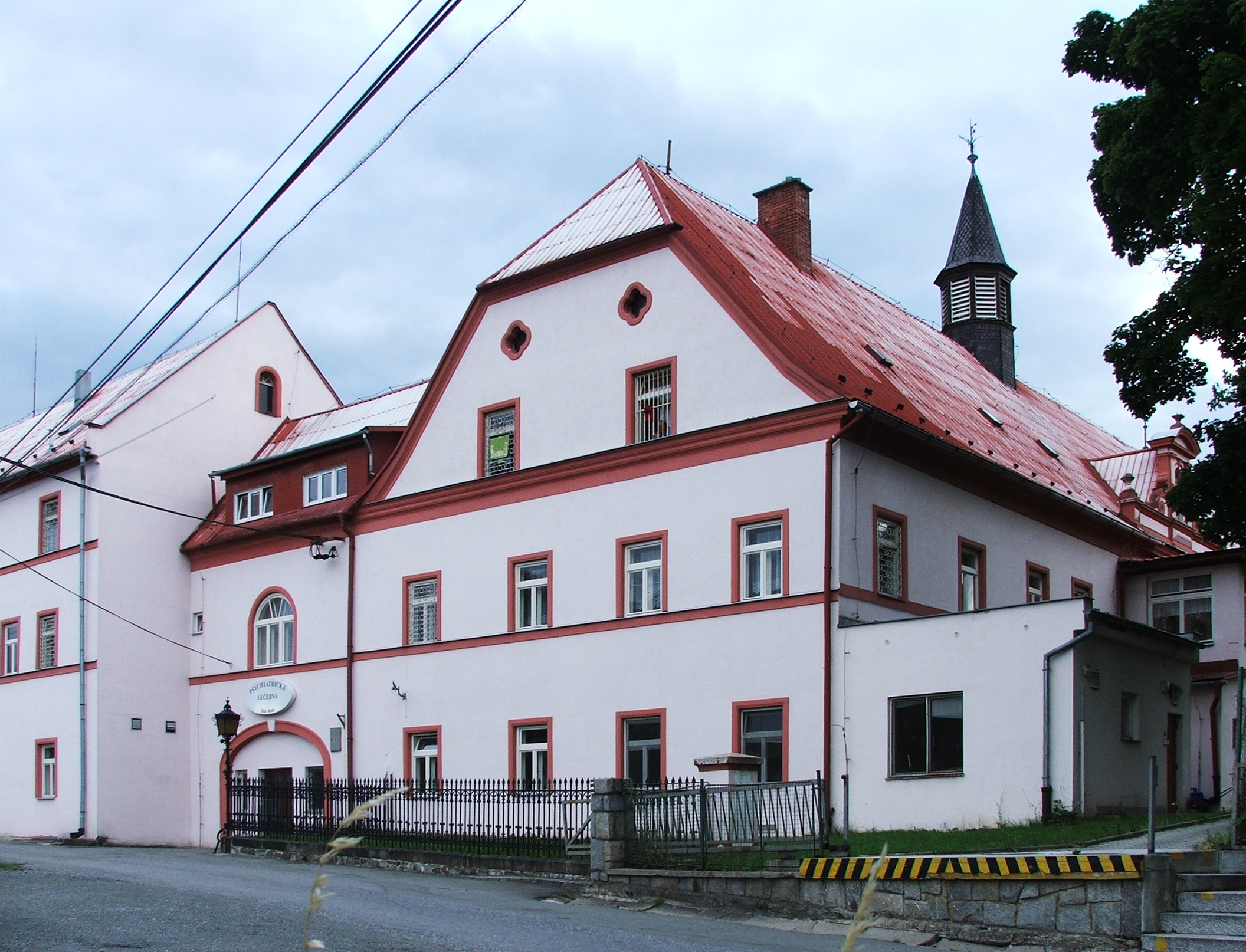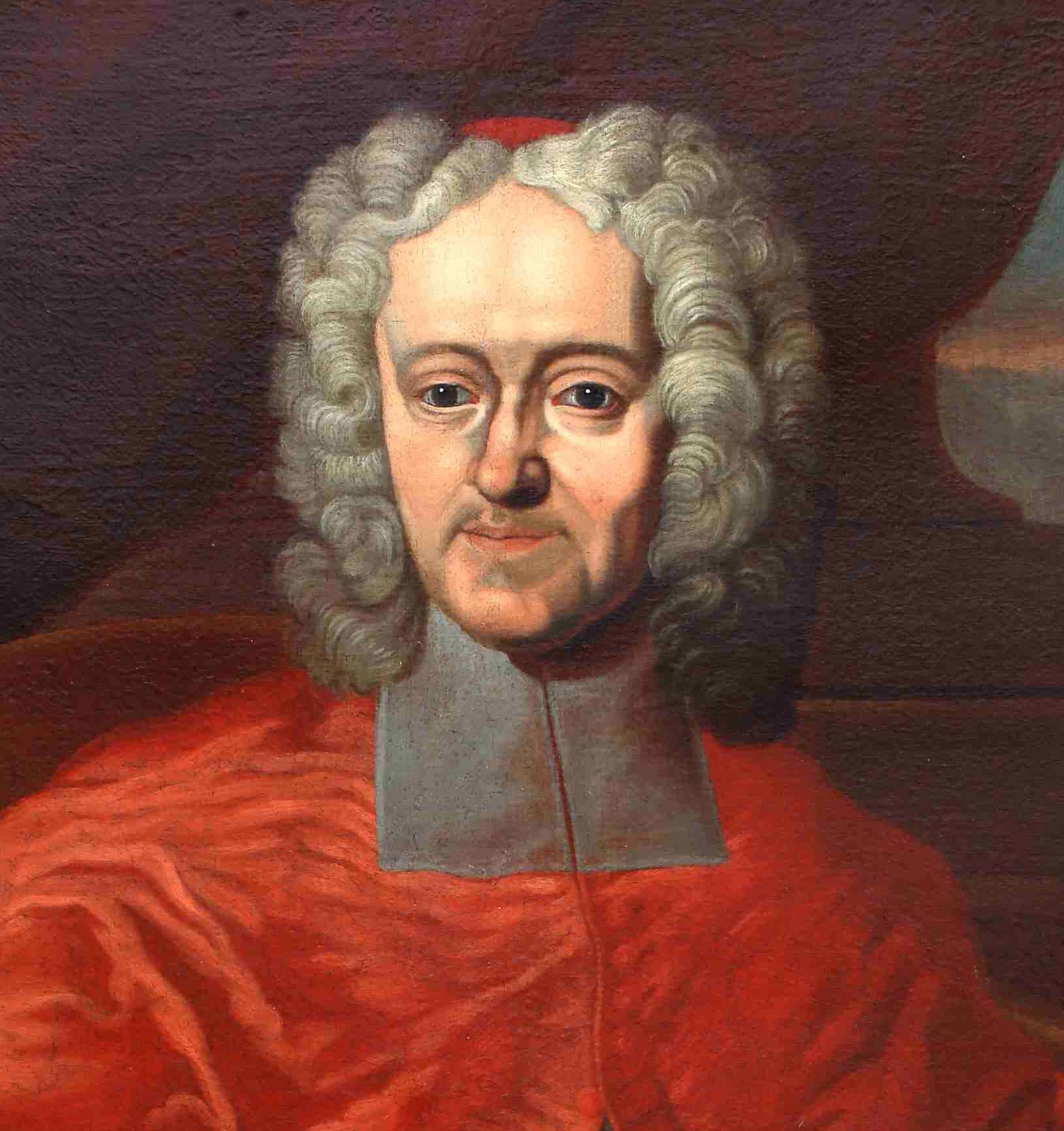|
Jakob Ernst Graf Von Liechtenstein-Kastelkorn
Jakob Ernst von Liechtenstein-Kastelkorn (14 February 1690 in Hertwigswalde – 12 June 1747 in Salzburg) was Bishop of Seckau, Bishop of Olomouc and Prince-Archbishop of Salzburg. Biography Jakob Ernst von Liechtenstein-Kastelkorn came from the South Tyrol noble family Liechtenstein-Kastelkorn. His parents were Franz von Liechtenstein-Kastelkorn, Imperial Privy Councillor, and Katharina b. Freiin Pavlovská. He studied philosophy and law in Brno and Olomouc. After he had decided on a spiritual career, he received in 1709 a canon in Olomouc and studied from 1709 to 1712 at the Collegium Germanicum in Rome, where he acquired a theological doctorate. After being ordained a priest in Rome in 1713, he worked for several years in the episcopal chancery in Olomouc and was at the same time an archdeacon in Troppau. In 1717 he was, after the renunciation of his brother, canon in Salzburg, where he soon rose to consistory president. Bishop of Seckau On 17 January 1728, Pope Bened ... [...More Info...] [...Related Items...] OR: [Wikipedia] [Google] [Baidu] |
His Grace
His Grace or Her Grace is an English Style (manner of address), style used for various high-ranking personages. It was the style used to address English monarchs until Henry VIII and the Scottish monarchs up to the Act of Union (1707), Act of Union of 1707, which united the Kingdom of Scotland and the Kingdom of England. Today, the style is used when referring to archbishops and non-royal dukes and duchesses in the United Kingdom. Examples of usage include His Grace The Duke of Norfolk; His Grace The Lord Archbishop of Canterbury; or "Your Grace" in spoken or written address. As a style of Dukes in the United Kingdom, British dukes it is an abbreviation of the full formal style "The Most High, Noble and Potent Prince His Grace". Royal dukes, for example Prince Edward, Duke of Kent, are addressed with their higher royal style, Royal Highness. The Duchess of Windsor was styled "Your Grace" and not Royal Highness upon marriage to Prince Edward, Duke of Windsor. Ecclesiastical usage ... [...More Info...] [...Related Items...] OR: [Wikipedia] [Google] [Baidu] |
Collegium Germanicum
The Collegio Teutonico (German College), historically often referred to by its Latin name Collegium Germanicum, is one of the Pontifical Colleges of Rome. The German College is the Pontifical College established for future ecclesiastics of German nationality. It is divided into two separate colleges; the Pontificio Collegio Teutonico di S. Maria dell’ Anima and the Collegio Teutonico del Campo Santo. Pontificio Collegio Teutonico di S. Maria dell’ Anima The Collegio Teutonico di S. Maria dell’ Anima is a residential college for priests who study at one of the Pontifical Athenaeums for advanced studies or work in the Roman Curia. It includes Santa Maria dell'Anima, the church of the German-speaking Catholics in Rome, and the adjacent Priests' College, a residential college of priests. Collegio Teutonico del Campo Santo The site of the Campo Santo dei Tedeschi goes back to the days of Charlemagne and was then called the Schola Francorum, a hospice for pilgrims. In the co ... [...More Info...] [...Related Items...] OR: [Wikipedia] [Google] [Baidu] |
1747 Deaths
Events January–March * January 31 – The first venereal diseases clinic opens at London Lock Hospital. * February 11 – King George's War: A combined French and Indian force, commanded by Captain Nicolas Antoine II Coulon de Villiers, attacks and defeats British troops at Grand-Pré, Nova Scotia. * March 7 – Juan de Arechederra the Spanish Governor-General of the Philippines, combines his forces with those of Sultan Azim ud-Din I of Sulu to suppress the rebellion of the Moros in the Visayas. * March 19 – Simon Fraser, the 79-year old Scottish Lord Loyat, is convicted of high treason for being one of the leaders of the Jacobite rising of 1745 against King George II of Great Britain and attempting to place the pretender Charles Edward Stuart on the throne. After a seven day trial of impeachment in the House of Lords and the verdict of guilt, Fraser is sentenced on the same day to be hanged, drawn and quartered; King George alters Fraser' ... [...More Info...] [...Related Items...] OR: [Wikipedia] [Google] [Baidu] |
1690 Births
Year 169 ( CLXIX) was a common year starting on Saturday (link will display the full calendar) of the Julian calendar. At the time, it was known as the Year of the Consulship of Senecio and Apollinaris (or, less frequently, year 922 ''Ab urbe condita''). The denomination 169 for this year has been used since the early medieval period, when the Anno Domini calendar era became the prevalent method in Europe for naming years. Events By place Roman Empire * Marcomannic Wars: Germanic tribes invade the frontiers of the Roman Empire, specifically the provinces of Raetia and Moesia. * Northern African Moors invade what is now Spain. * Marcus Aurelius becomes sole Roman Emperor upon the death of Lucius Verus. * Marcus Aurelius forces his daughter Lucilla into marriage with Claudius Pompeianus. * Galen moves back to Rome for good. China * Confucian scholars who had denounced the court eunuchs are arrested, killed or banished from the capital of Luoyang and official life duri ... [...More Info...] [...Related Items...] OR: [Wikipedia] [Google] [Baidu] |
Verifiability
Verify or verification may refer to: General * Verification and validation, in engineering or quality management systems, is the act of reviewing, inspecting or testing, in order to establish and document that a product, service or system meets regulatory or technical standards ** Verification (spaceflight), in the space systems engineering area, covers the processes of qualification and acceptance * Verification theory, philosophical theory relating the meaning of a statement to how it is verified * Third-party verification, use of an independent organization to verify the identity of a customer * Authentication, confirming the truth of an attribute claimed by an entity, such as an identity * Forecast verification, verifying prognostic output from a numerical model * Verifiability (science), a scientific principle * Verification (audit), an auditing process Computing * Punched card verification, a data entry step performed after keypunching on a separate, keyboard-equipped ma ... [...More Info...] [...Related Items...] OR: [Wikipedia] [Google] [Baidu] |
Saint Wenceslas Cathedral
Saint Wenceslas Cathedral ( cs, Katedrála svatého Václava) is a gothic cathedral at Wenceslas Square in Olomouc, in the Czech Republic, founded in 1107. The square was named after Saint Wenceslaus I, Duke of Bohemia on the thousandth anniversary of his death in 935. The cathedral is also named after him. The cathedral is the seat of the Roman Catholic Archdiocese of Olomouc. History The cathedral began in the Romanesque style and was consecrated in 1131. Extensive Gothic modifications were made in 13th and 14th century. Bohemian king Wenceslaus III of Bohemia was murdered in a nearby house of the former dean of the cathedral on 4 August 1306. Wenceslaus III was the last of the male Přemyslid rulers of Bohemia. Gothic revival Gothic Revival (also referred to as Victorian Gothic, neo-Gothic, or Gothick) is an architectural movement that began in the late 1740s in England. The movement gained momentum and expanded in the first half of the 19th century, as increasingly ... [...More Info...] [...Related Items...] OR: [Wikipedia] [Google] [Baidu] |
Queen Of Bohemia
This is a list of the royal consorts of the rulers of Bohemia. The first Duchess of Bohemia (''česká kněžna'') was St. Ludmila, while the first Queen of Bohemia (''česká královna'') was Świętosława of Poland. Some of them were (like their husbands) not crowned. There was only one queen regnant in Czech history - Maria Theresa. Nevertheless, some female royal consorts were highly influential in the country's history, having ruled as regents for their minor children and heirs, as well as having a great influence over their spouses. The title was used until 1918, when husband of the last queen was deposed. House of Přemysl Duchesses of Bohemia * 874–888/891: Ludmila of Bohemia (Svatá Ludmila), wife of Bořivoj I, d. assassinated 15 September 921 in Tetín Castle * 906–921: Drahomíra (princess Drahomíra ze Stodor), wife of Vratislav I, d. after 935 * 935–972: Biagota, wife of Boleslav I * ?–999: Emma of Melnik (Emma ''Regina'' or Hemma princess of Burgu ... [...More Info...] [...Related Items...] OR: [Wikipedia] [Google] [Baidu] |
Maria Theresa
Maria Theresa Walburga Amalia Christina (german: Maria Theresia; 13 May 1717 – 29 November 1780) was ruler of the Habsburg dominions from 1740 until her death in 1780, and the only woman to hold the position ''suo jure'' (in her own right). She was the sovereign of Austria, Hungary, Croatia, Bohemia, Transylvania, Mantua, Milan, Lodomeria and Galicia, the Austrian Netherlands, and Parma. By marriage, she was Duchess of Lorraine, Grand Duchess of Tuscany and Holy Roman Empress. Maria Theresa started her 40-year reign when her father, Emperor Charles VI, died on 20 October 1740. Charles VI paved the way for her accession with the Pragmatic Sanction of 1713 and spent his entire reign securing it. He neglected the advice of Prince Eugene of Savoy, who believed that a strong military and a rich treasury were more important than mere signatures. Eventually, Charles VI left behind a weakened and impoverished state, particularly due to the War of the Polish Succession and the Rus ... [...More Info...] [...Related Items...] OR: [Wikipedia] [Google] [Baidu] |
Bílá Voda
Bílá Voda (german: Weißwasser, pl, Biała Woda) is a municipality and village in Jeseník District in the Olomouc Region of the Czech Republic. It has about 300 inhabitants. Etymology Bílá Voda is named after the eponymous creek in the village. The name literally means "white water". Geography Bílá Voda is located at the westernmost point of the Czech Silesia region, on the border with Poland. It lies approximately north-west of Jeseník, north of Olomouc, and east of Prague. Bílá Voda lies in the valley of the Bílá voda Creek, a tributary of the Eastern Neisse. It is situated in the northern part of the Golden Mountains range of the Eastern Sudetes. The highest point of the municipality is the mountain Javorník at above sea level. About two thirds of the municipal territory are covered with forests. History A village named ''Wyssoka'' was documented in the area in 1267–1271, however, it was later abandoned. The village of Bílá Voda was founded probably by ... [...More Info...] [...Related Items...] OR: [Wikipedia] [Google] [Baidu] |
Wolfgang Hannibal Von Schrattenbach
Wolfgang Hannibal von Schrattenbach (12 September 1660 – 22 July 1738) was a German Prince-Bishop of Olomouc, Viceroy of Naples and Cardinal. Biography He was born on 12 September 1660 in Lemberg pri Šmarju, Lemberg Castle, Duchy of Styria, in the ancient Schrattenbach family. He graduated in Rome as Doctor of Philosophy and Doctor of Theology (1682). In the same year he became a canon in the Episcopal Chapter of Olomouc in the Margraviate of Moravia and a canon in the Archbishop's Chapter of Salzburg. Both principalities were part of the Holy Roman Empire. After his ordination to the priesthood (1688) he became dean of the chapter of Salzburg. His ecclesiastical career took off with his appointment as Prince-Bishop of Olomouc (1711–1738), titular abbot and cardinal-priest of San Marcello al Corso in Rome (1714–1738). Schrattenbach combined this with the position of advisor to Charles VI, Holy Roman Emperor, Emperor Charles VI (from 1713) and Ambassador of the Emperor in ... [...More Info...] [...Related Items...] OR: [Wikipedia] [Google] [Baidu] |





